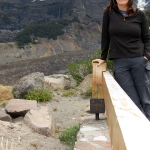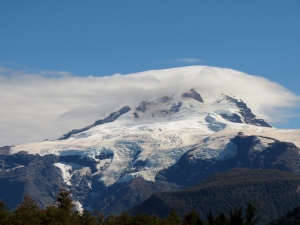What’s Black and White and Screams Like Thunder?

“Beep.”
“Beep.”
“Beep.”
“Beep.”
Panicking as I looked through the viewfinder of my camera, I saw the countdown in oversized digital numbers, “10. 9. 8. 7…”
 I bought a new camera before my trip to Argentina. While I did look for zoom capabilities and shutter speed, my purchasing criteria focused on independent travel. I wanted a camera that would be useful for a half-year’s worth of self-portraits. My Canon has a rotating viewfinder LED screen, so I can see myself in my own pictures (think iPhone), and it has the ubiquitous self-timer.
I bought a new camera before my trip to Argentina. While I did look for zoom capabilities and shutter speed, my purchasing criteria focused on independent travel. I wanted a camera that would be useful for a half-year’s worth of self-portraits. My Canon has a rotating viewfinder LED screen, so I can see myself in my own pictures (think iPhone), and it has the ubiquitous self-timer.
“Beep. Beep. Beep. Beep, beep, beep, beep, beep”—Flash! I had just taken a shot of myself in front of one of world’s rarest glaciers. It was then that Nature called our attention. The 50 or so tourists were taking pictures, talking to each other, and listening to guides explain how the dark, volcanic soil is pushed into the glacier as it cuts across the face of Patagonia’s Mount Tronador.
You can hear glaciers before you see them in action. Like any deadly force of nature, they have a warning call. When the weight of tons of ice sliding and clawing its way from the summit forces a chunk the size of an iceberg off of the edge of a cliff, it lets you know what’s gonna happen. A rumble began to echo off the Andes, and I began searching for lightning in the cloudy sky.
“¡Mira! ¡Mira! ¡Mira!” a girl shouted, and a hush fell over the lookout point. Every single person turned to face the glacier and then froze in anticipation. If ancient rocks were to moan in pain, it would sound like the cracking of this white ice as it crashed hundreds of feet to the black glacier below. Amazed, I grabbed my camera from the “self-portrait” fence-post perch and focused the spot on the mountainside where the ice seemed to be slowly exploding, shattering into so many shards it looked like snow falling. Like the National Geographic photographer I imagined myself, capturing nature’s rare moments, my fingertip quickly pressed the shutter.
“Beep!”
“Beep!”
“Beep!”
“Beep!”
“Beep!”
“NO!!” I thought as the self-timer slowly counted backwards before the moment could be preserved. I wanted to share this moment with someone back home. I wanted to talk about watching stone being carved and crashed into by ice right before my eyes. Large chunks of ice, the size of a car or more, were free-falling, and I still had seven slow seconds before anyone would be able to believe me.
Quickly, I turned off my camera and turned it back on. I didn’t depress the shutter button; I hit video. Somehow I was able to capture the last two, fading seconds of this phenomenon.
I’d like to tell you all about why this glacier is black when all of the other ones around the world are bluish-white. I would love to explain how sediment is pushed and packed into its dense ice or how Mount Tronador is really a volcano. I’d like to be able to tell you why some of the ice floes in the glacial lake are white and some of them are black, but I can’t. I cannot tell you any of these interesting facts because for the rest of my time there, I stayed perched along the edge of the cliff, eye glued to my camera’s viewfinder, finger on the shutter, waiting to capture another serac toppling over. I would hear the growl of Nature, turn, and only see a little bit of ice break off the top.
I was able to witness this spectacle about three more times before I had to return. As I walked back to the tour bus, I couldn’t help but feel a little disappointed. I was not saddened because I hadn’t captured the “perfect shot.” I didn’t!  It was because I was so in awe of watching the raw force of nature at work. I cannot tell you with words, or photos, what it is like to hear the crushing echo of jagged volcanic rock being carved and split by something as cool and calm as ice. Ice. I think we often overlook the slow and subtle, like ice, writing it off as being insignificant. Standing at the foot of this black, glob of frozen glacier grinding its way down the face of Mount Tronador, I was reminded that it is we who are the insignificant ones.
It was because I was so in awe of watching the raw force of nature at work. I cannot tell you with words, or photos, what it is like to hear the crushing echo of jagged volcanic rock being carved and split by something as cool and calm as ice. Ice. I think we often overlook the slow and subtle, like ice, writing it off as being insignificant. Standing at the foot of this black, glob of frozen glacier grinding its way down the face of Mount Tronador, I was reminded that it is we who are the insignificant ones.
Notes:
- Tronador means “thundering” in Spanish.
- It also shares an international border with Chile. Its tallest peak belongs to both Argentina and Chile.
- Scientists expect the black glacier to disappear within 15-30 years due to global warming.